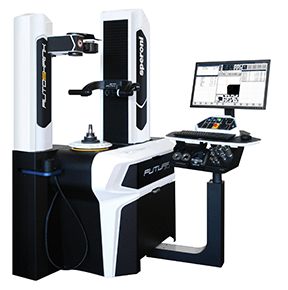Benefits to Tool Presetting in this Aerospace Manufacturing World
In the precision, no-room-for-error world of aerospace, manufacturers need sophisticated tool presetting like airplanes need wings. Yet, you wouldn’t know it by visiting a cross-section of shops doing this work; I’ve seen spacecraft manufacturers that use manual benchtop presetters, while those that produce refreshment carts rely on a full CNC presetter. A little confusing, right?
aerospace, manufacturers need sophisticated tool presetting like airplanes need wings. Yet, you wouldn’t know it by visiting a cross-section of shops doing this work; I’ve seen spacecraft manufacturers that use manual benchtop presetters, while those that produce refreshment carts rely on a full CNC presetter. A little confusing, right?
Admittedly, selecting the right presetter can only be done by looking at particular needs, and the variables are many: who is setting the tools; the number of tools set in a day; the level of automation of the machines it will support; the potential need for traceability of tool settings or to manage tooling and consumables at the presetter.
As with any substantial investment, you of course have to also look at cost versus return. For example, one shop could spend $10,000 on a presetter to support a $1 million machining center because all that’s needed is a starting length for the laser installed in the machine—it does the job.
Then again, say you purchase a $30,000 presetter to support the same machine. Now you can accurately measure and adjust runout (something an installed laser cannot do) and therefore increase tool life. Now, consumable costs for that machine are cut by 40 to 50 percent.
So, what is the right presetting arrangement for an aerospace company?
Since many aerospace manufacturers have a lot of machines (many being legacy machines) and a whole planeload of tools, the best tool setting practice is to have a tool crib. This keeps all tooling and consumables together and helps ensure they are at the machining centers when they are needed, promoting virtually uninterrupted production. A full CNC presetter makes the most sense as well—throughput is high, setup is always accurate to the desired tolerance and it puts the option to trace setups at your fingertips.
Let’s look at some real-world examples of aerospace manufacturers that have realized the virtues of CNC presetting and successfully integrated them. Because of the nature of the business, I’m withholding customer names, locations and any other sensitive information.
Company A uses a large number of multiple insert cutters, most between 12 and 36 inserts. In order to maximize tool life and reduce costly titanium scrap, every cutter requires 100% inspection of all inserts. By adding a full CNC presetter they were able to do this full inspection while the crib operator was replacing the inserts on the next cutter. Now they can also determine when a cutter body is worn to the point that it will affect part quality and catch incoming cutters that are not made to spec before they disrupt production. And because the presetter is doing the full inspection, they have a record of the measurements for every single cutter with years of history if the need arises because of an audit.
Company B used to maintain a complete set of tools for every part they manufactured. By adding a full CNC presetter with shrink fit capability, they’ve been able to put all the tooling into the database with the complete list of components and have setups ready and waiting for production, even if they only see them once every couple of years. The presetter/shrink fit hybrid has also enabled a single setup of tools to an accuracy of +/- 0.005mm. Component disassembly and storage has even been streamlined to the point that the overall assembled tool inventory has been reduced by more than 50 percent.
Company C needed a way to send updated tooling information seamlessly to the machining center without the chance of human error. We introduced them to a CNC presetter with radio-frequency identification (RFID) technology. It reads the small RFID chip attached to the tool then automatically identifies the correct measuring program, measures the tool and writes the dimensions back onto the RFID chip so that the machining center can read this info as the tool is loaded back into the tooling chain. We were then also able to monitor the returning tools for the tool life and generate a report to find trends that point to potential problems with tool bodies, cutters or possibly even the machining center spindle.
As you see, there are a lot of different ways to use CNC presetters and they unlock even more efficiencies and opportunities for improvement. They are certainly an investment, but, especially for companies doing aerospace work, they pay for themselves in relatively short order.


¿Te pareció interesante o útil? Haznos saber tu opinión agregando tus comentarios o preguntas a continuación.